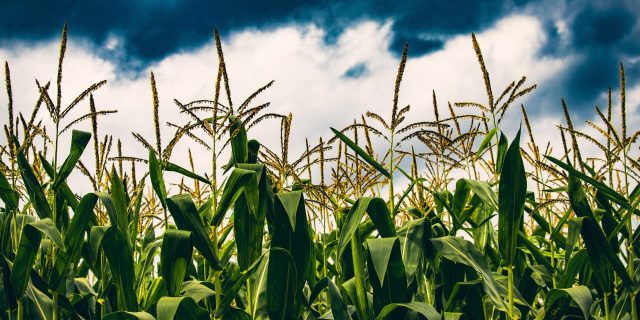19
Apr
Crop Diversification with Intercropping Effective at Reducing Pest Pressures, Study Finds

(Beyond Pesticides, April 18, 2023) Crop diversification is effective at reducing pest abundance in growing climates across the globe, according to a meta-analysis published this month in the Journal of Applied Ecology. The meta-analysis, which includes a review 44 field studies from six continents, provides greater weight to approaches that work with natural processes, rather than those focused on human-made chemical sprays for pest management.
Within the studies reviewed, researchers aimed to understand the associational effects that resulted in either associational resistance (a decrease) or associational susceptibility (an increase) in insect herbivores on the primary crop being grown. Researchers reviewed a range of variables, comparing pest numbers in monocultures vs bicultures, evaluating whether the pest is a generalist or specialist, how it feeds (checking or piercing/sucking), its origin (native/non-native), as well as climate, crop type (only onions, brassicas, cotton, and cucurbits were evaluated), plot size, and the experimental design within each particular study.
In sum, the review represents one of the most comprehensive evaluations of intercropping to date. And the results confirm the benefits many farmers and gardeners across the world have found anecdotally in their own plots. “Overall, intercropping proved to be very effective against pests, but it did vary based on the pest and their feed preferences,” said study coauthor Philip Hahn, PhD of University of Florida. “It also depended on crop type, with cabbage and squashes showing the strongest resistance, while resistance was less strong for onions and cotton.”
Bicultures are provide a significant reduction in pest pressure. But this approach is most effective in protecting crops from generalist predators. “In the studies we examined, we found intercropping was more effective for generalist pests that feed on a variety of crops,” Dr. Hahn said. “Specialist pests that target one type of crop were less affected.” This makes sense, as pest predators that evolved a close relationship with a crop are much less likely to be enticed to feed on a crop it did not specialize in consuming.
The effect of intercropping did appear to wane as latitudes increased, but only for certain crops and certain insect pests – specifically specialist, piercing, and native pests. “We did find a stronger benefit for pest suppression at lower latitudes—so, in tropical systems versus northern temperate systems,” Dr, Hahn said. “There are lots of reasons we could have found that pattern, of course; the tropics are places where there tend to be more species of insects year-round. It was surprising that the pattern was not as strong as I would have expected.”
The meta-analysis and studies previously reported on by Beyond Pesticides show the benefits of increasing crop diversity on farms. A 2020 study found that crop diversity in agriculture is just as important as plant diversity in non-commercial landscapes, and that less diversity leads to more pesticide use. A 2021 study reported on found that multi-crop farmlands produced higher biomass and seed yields than single crop monocultures. While intercropping and multi-cropping provide numerous benefits, monocropping contributes to the loss of biodiversity, including pollinator populations, according to a 2019 study.
It is incredibly important to continue research like the present study, so scientists can aide farmers in determining the best natural strategies to take as part of their production practices. But it is apparent from the data collected that one generally can’t go too wrong with such an approach. “There are a few combinations that seem to be particularly effective at reducing pest abundance,” Dr. Hahn indicates. “Overall, for growers interested in organic methods, intercropping seems to be a very effective tool.”
For more information on the benefits associated with organic agriculture, see Beyond Pesticides webpage on Why Organic is the right choice for the future of farming.
All unattributed positions and opinions in this piece are those of Beyond Pesticides.
Source: Journal of Applied Ecology, University of Florida press release
Image Source: PXfuel










